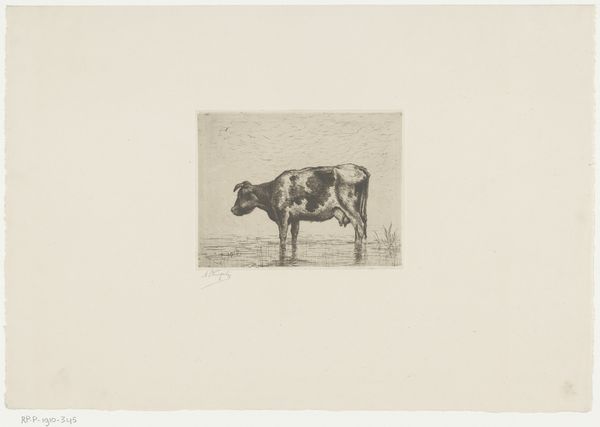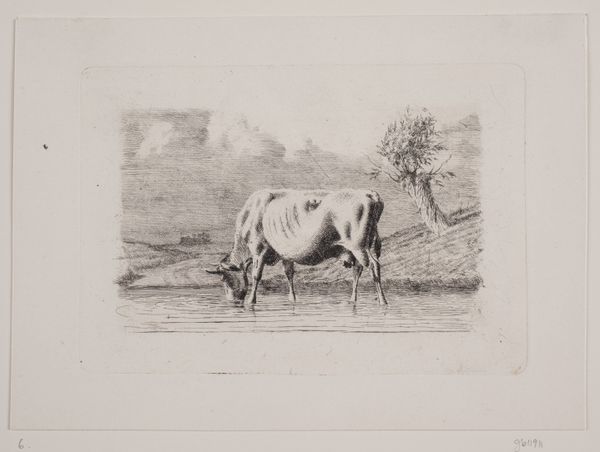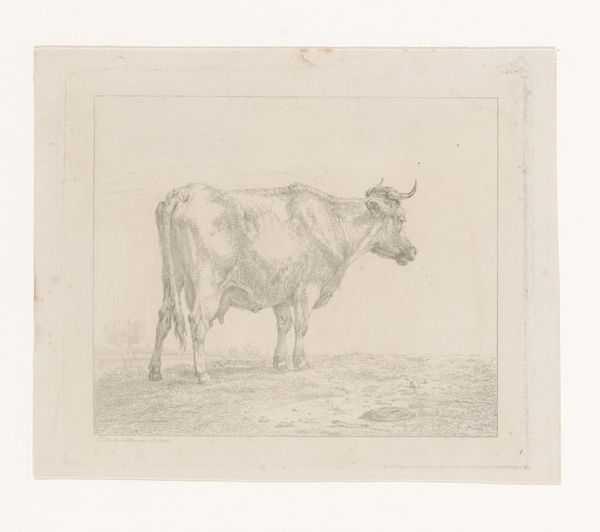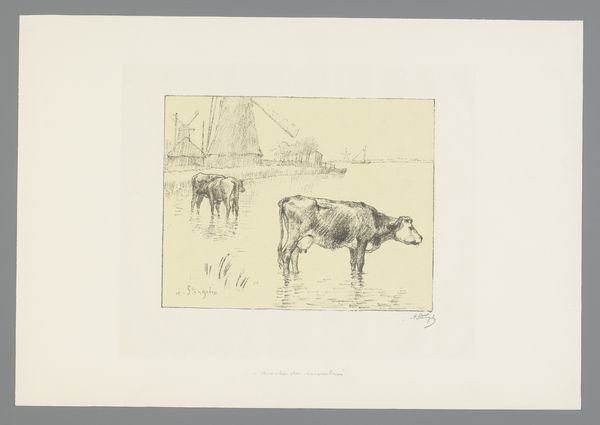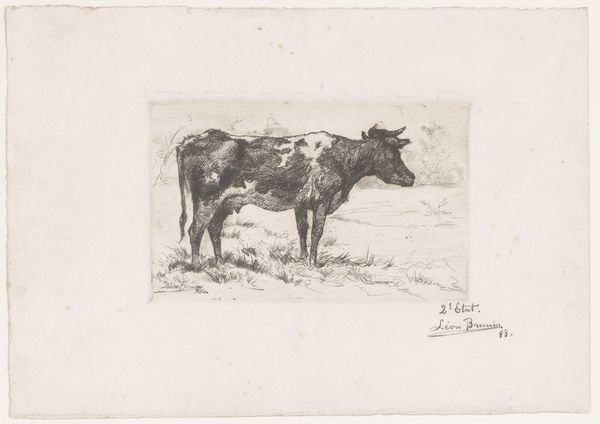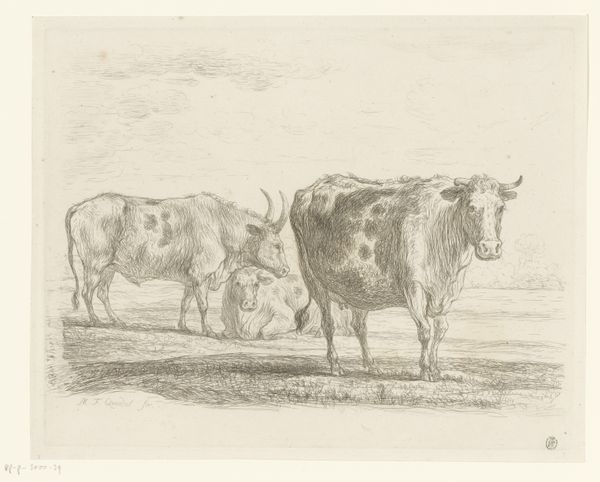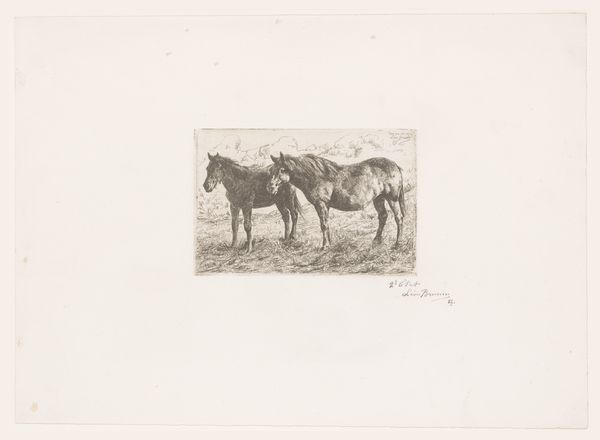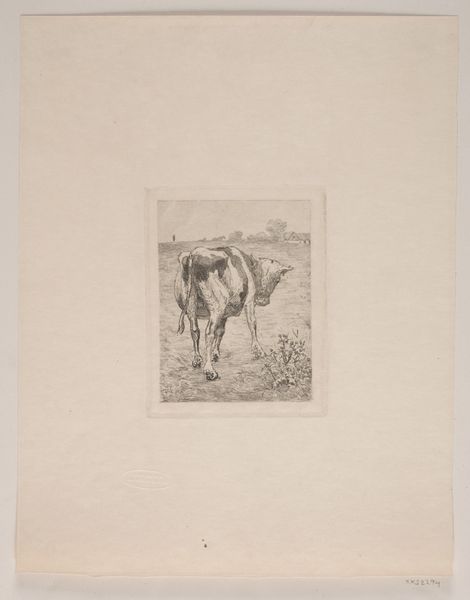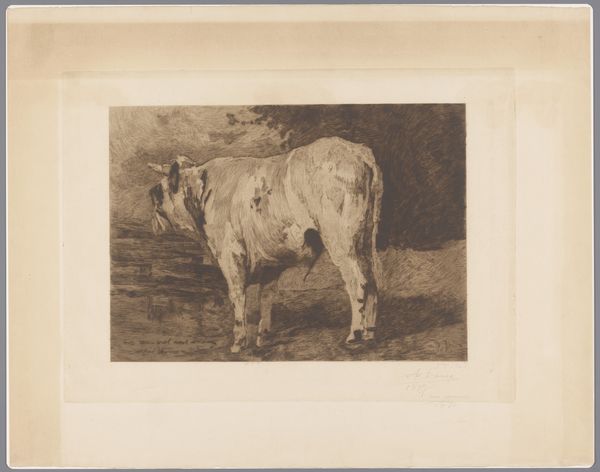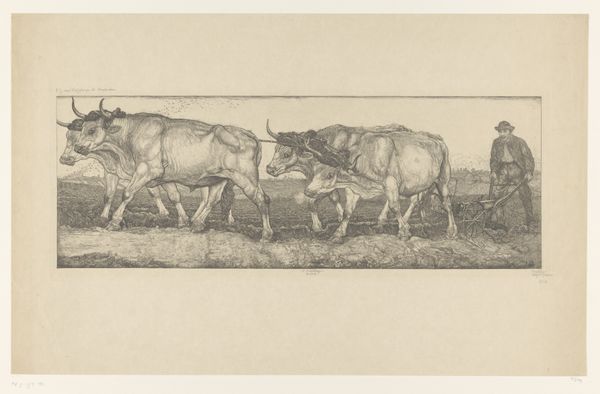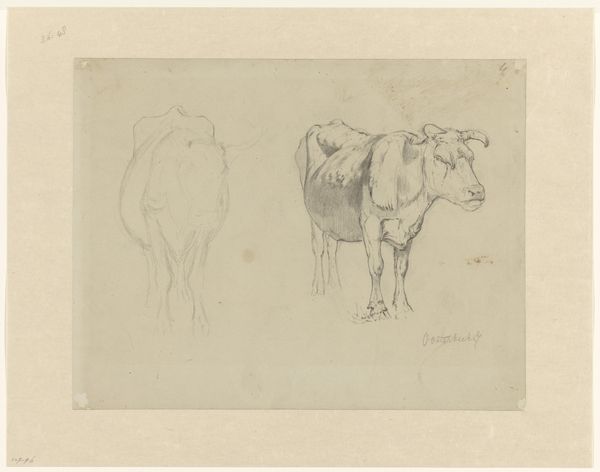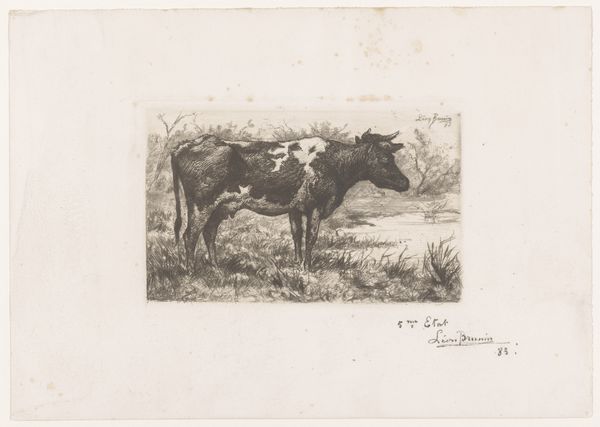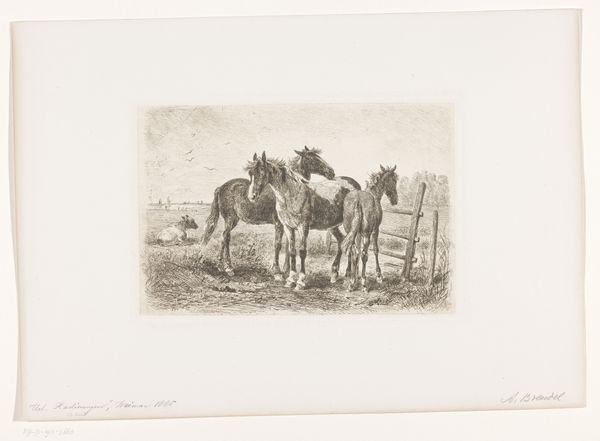
print, etching
#
animal
# print
#
etching
#
landscape
#
realism
Dimensions: height 189 mm, width 250 mm
Copyright: Rijks Museum: Open Domain
Editor: Here we have "Two Cows in a Puddle," an etching by Alphonse Stengelin, dating somewhere between 1862 and 1910. It's quite a simple scene, but there's something compelling about the cows standing in the water...almost contemplative. What do you make of this work? Curator: It’s interesting to consider the historical context in which Stengelin created this piece. Realism as a movement sought to depict everyday life, often focusing on the working class and rural scenes, challenging the Romantic idealism prevalent before. This image embodies that shift. Editor: So, you're saying the choice of subject matter itself is a statement? Curator: Precisely! Cows weren't exactly the heroes of academic painting. But here they are, presented with a quiet dignity. How does that relate to contemporary ideas about labor and food? How are cattle valued then versus today? Also, note the technique. Etching, a printmaking process, allows for the wide dissemination of images. How does that democratization of art affect its social impact? Editor: That’s fascinating. I hadn’t thought about the act of reproducing the image as a form of social commentary in itself. So, instead of romanticizing the countryside, Stengelin seems to be grounding it in a more real, accessible experience. Curator: Exactly. And who got to see this image? Did it reach rural farmers, or primarily urban art collectors? Think about the art market too and how images are distributed, the gatekeepers, who's creating the value for art. Those questions shape how we view it today. Editor: It definitely provides a new layer to my understanding of Realism. Seeing it as less about just depicting reality and more about making art relevant to wider audiences and reflecting their reality. Curator: Right, and consider how these depictions of agricultural life played into broader social and political narratives of the time. I found it quite a thought-provoking reinterpretation, myself.
Comments
No comments
Be the first to comment and join the conversation on the ultimate creative platform.
